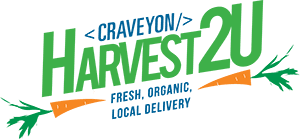
Does Buying High Quality Produce Actually Save Money?
So you think buying locally grown organic produce costs too much. Seriously? We can show you how you save money when buying local. Let’s look at just a couple of factors that make buying local produce cost-effective.
Waste
Believe it or not, according to ethicalconsumerism.tribe.net, “the average family of 4 wastes 122 pounds of food per month”! Try this – go look in your refrigerator right now. Really. Right now. What did you find? How much produce needed to be thrown out? Too much, right?
Now, ask yourself how much of your produce you toss because it has wilted or spoiled before you ate it. Be truthful, now. 5%? 10%? 25%? 50%? Whatever that number is, you need to multiply your average cost of weekly (or monthly) produce by that amount. That then is the REAL cost of your produce. When you thought you were saving money on that grocery store produce, you were actually spending more. If it doesn’t go into your mouth, then don’t spend your money on it!
If it doesn’t go into your mouth, then save your money and don’t buy it.
More on waste
According to frugal.families.com, “Americans waste 25% of their groceries instead of consuming them. If you factor an average cost of $7,000 a year on groceries, that’s $1,750 in the garbage.” So, plan ahead and don’t “stock up” on fresh produce. Purchase what your family can eat in a few days to a week. This will minimize loss due to spoilage. If you don’t need it soon, then don’t spend your money on it!
Nutritional loss
Studies show an average of 75% loss in nutritional value in produce just five days after picking. How long is it between the time supermarket produce is picked and the time you eat it? How much nutritional value is left? Answer – The typical amount of time from the farm to the grocery store is a minimum 1 week, and more like 2 weeks (and the produce travels an average of 1,500 miles!). Conclusion – There is a greatly reduced nutritional value in grocery store produce.
So, why do you want your kids to eat their veggies? It’s because of the nutritional value, right? Then let’s give them produce that actually still has value. Also, shorter cooking times helps keep less stable nutrients in the produce. So get used to “al dente’” veggies.
If it doesn’t help your body become healthier, then don’t spend your money on it!
Low overhead keeps prices low
Local organic produce, delivered through a local farm to home service carries a very low overhead. Overhead costs are passed on to the consumer in the price of products and services. Lower overhead means lower prices. Harvest2U produce, fruits, and vegetables are very competitively priced.
If it costs too much and you’re not getting value, then don’t spend your money on it!
The economics of buying local
Every dollar we spend in our local economy creates an impact of 2 to 7 times its value. For example, when we spend our dollar with the local farmer, that farmer can then spend the same dollar to buy shoes for his kids. That shoe salesman can then pay his water bill. The water purveyor can then buy his fresh produce from Harvest2U! And on the cycle goes.
If we spend our dollar with the merchant in China, then the Chinese merchant can buy new shoes for his kids, but we lose the impact of the dollar in our neighborhood.
See how that works? If it’s possible to get it local, then DO spend your money on it!
